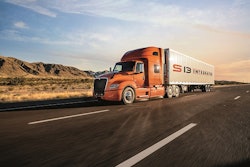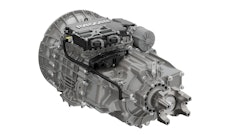
In the dynamic world of vehicle manufacturing, it comes as no surprise that developments in the automotive industry often pave the way for advancements in the commercial vehicle sector. However, what factors sustain this leader-follow dynamic and are there exceptions to this pattern?
In the following, we'll delve deeper into the interconnected nature of these two sectors, exploring why the automotive industry tends to lead in technological advancements while uncovering instances where commercial vehicles have unique opportunities.
From groundbreaking electric vehicle (EV) technology to the quest for autonomous transportation, the automotive sector serves as a catalyst for technological innovation. However, it is crucial to recognize that progress is not a one-way street. In certain instances, commercial vehicles and buses have taken the lead, leveraging unique requirements and industry incentives to drive progress.
Automotive Innovation
The automotive industry has long been at the forefront of technological breakthroughs, primarily due to various factors that drive innovation and change. The first of these is mass market demand. With a significantly larger consumer base, the automotive sector operates on a scale that allows for substantial investment in research and development. The pursuit of competitive advantages, customer satisfaction and the desire for improved safety and performance collectively fuel technological progress.
In addition, growing consumer concerns about climate change and environmental sustainability have compelled the automotive sector to prioritize the development of cleaner, more efficient vehicles. The emergence of EVs is a prime example of this commitment, driven by the need to reduce greenhouse gas emissions and dependence on fossil fuels.
Consumers are also increasingly demanding advanced features, connectivity and cutting-edge technology in their vehicles. As a result, the automotive industry constantly seeks to meet these demands, pushing the boundaries of innovation in areas such as infotainment systems, connectivity, and autonomous driving capabilities.
Spillover Benefits
The advancements made in the automotive sector have significant implications for those involved in commercial vehicle design and manufacturing. Commercial vehicle manufacturers can leverage the technological progress in the automotive sector by adopting and adapting proven innovations for their specific applications. This allows them to enhance the safety, efficiency and reliability of their products while reducing development costs and time-to-market.
For example, the development of electric steering columns in the automotive sector, is helping pave the way for their introduction in the bus and coach sector. The ergonomic benefits of this unique feature will be especially important in an industry where musculoskeletal problems are highly prevalent, and there is a growing shortage of drivers.
Technological advancements introduced in the automotive sector, such as emissions reduction technologies, can result in stricter regulatory standards. These standards can subsequently influence the development and design of commercial vehicles, prompting manufacturers to align their products with evolving regulations. For example, the introduction of emissions charges in urban environments creates greater incentives for investment in electric last mile delivery vehicles and there are numerous startups trying to capitalize on this opportunity.
The interdependence between the two sectors presents opportunities for collaboration and knowledge sharing. Commercial vehicle manufacturers can collaborate with automotive counterparts, leveraging their expertise to address unique challenges and develop tailored solutions that meet the specific demands of their industry.
Commercial Takes the Lead
While the automotive sector leads the way in technological development, there are instances where commercial vehicles and buses take the reins due to their distinctive requirements and industry-specific incentives. Hydrogen technology is a good example.
Although EVs appear to have gained the upper hand in the automotive sector, hydrogen fuel technology has unique advantages at powering heavy vehicles, leading to competition between hydrogen and electric in this sector. This ongoing competition will mean the commercial vehicle sector provides the impetus for developments in hydrogen technology.
Driverless technology is another area where commercial vehicle OEMs face challenges and opportunities that are unique to their sector. Long-haul trucking, for example, involves extended periods of highway driving, often along predetermined routes.
The commercial sector can seize this opportunity to introduce autonomous technologies, enabling increased safety, reduced labor costs and improved logistics efficiency. In contrast, introducing driverless technology for passenger vehicles that must navigate complex urban environments has proven more challenging than many anticipated a decade ago.
Commercial vehicles also face rigorous demands and operate under challenging conditions. Consequently, advancements in durability, reliability and maintenance practices driven by commercial vehicle manufacturers can later be adopted by the automotive sector to enhance the robustness of their products. This is especially true for safety critical parts like steering and suspension components, which are often over-engineered to reduce the risk of failure.
Finally, commercial vehicles often serve as a vital link in the logistics chain, requiring effective communication and real-time monitoring capabilities. The commercial sector’s focus on connectivity and telematics technology to optimize fleet management and improve operational efficiency can pave the way for similar advancements in the automotive industry.
The symbiotic relationship between the automotive and commercial vehicle sectors is crucial for driving technological progress in the transportation industry. While the automotive sector tends to be at the forefront of innovation, commercial vehicles seize opportunities unique to their industry, leading to breakthroughs in specialised areas. As the pursuit of advancement continues, collaboration and knowledge-sharing between these sectors will remain essential for maximizing progress, improving safety and meeting evolving customer demands.

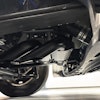
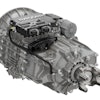
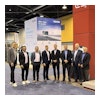


![Freightliner4[1]](https://img.oemoffhighway.com/files/base/acbm/ooh/image/2023/10/Freightliner4_1_.653bd134621e1.png?auto=format%2Ccompress&fit=crop&h=167&q=70&w=250)
